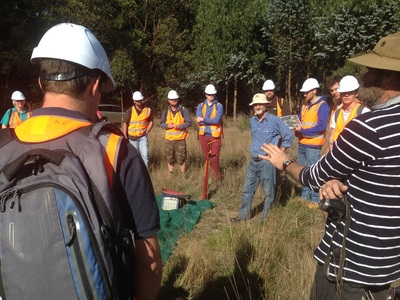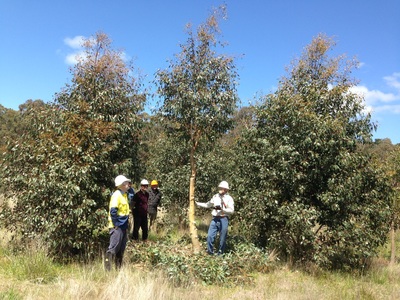Biodiversity and Profit
|
Income from biodiversity
 Watermelon and cucumber salad with ground acacia seed garnish.
Click image for the story 'Acacias, the cafes of the bush'
Watermelon and cucumber salad with ground acacia seed garnish.
Click image for the story 'Acacias, the cafes of the bush'
Biodiversity and profit sound like strange bedfellows but they can benefit each other
Profitable plants can be incorporated into plantations designed to enhance biodiversity, without downgrading habitat for wildlife.
Profitable plants can provide food, shelter and quality habitat for insects, birds and mammals while returning products that are useful and valuable to farmers. These productive plants can be local to the area (indigenous/endemic) or Australian native plants not local to the area or exotic plants planted for a specific purpose.
Plantations can provide income in various ways;
The biodiversity is provided by indigenous plants appropriate to the local Ecological Vegetation Class. Indigenous plants provide food and habitat for wildlife and they can also have a commercial value. For example; Many indigenous provenances are now so rare they can be planted for harvesting and selling seed for revegetation projects. This not only provides an income to the landowner but also protects the species and provenances from local extinction.
Students and groups with an interest in the environment are keen to see good examples a healthy woodland or forest. This could be a source of income as well as information exchange. What value do you put on the inspiration that this type of outdoor experience provides?
What value do you put on the enjoyment and the emotional healing gained from an encounter with nature?
Read more about designing for profit here
Profitable plants can be incorporated into plantations designed to enhance biodiversity, without downgrading habitat for wildlife.
Profitable plants can provide food, shelter and quality habitat for insects, birds and mammals while returning products that are useful and valuable to farmers. These productive plants can be local to the area (indigenous/endemic) or Australian native plants not local to the area or exotic plants planted for a specific purpose.
Plantations can provide income in various ways;
- products for the farm like firewood, fence posts and drought fodder for stock
- timber for building houses, making furniture and for craft goods
- essences like eucalyptus oil, tea-tree oil and sandalwood oil
- cut flowers and foliage for sale at the farm gate
- rare seed of endangered plant species to collect and sell for revegetation projects
- flowering trees and shrubs planted for quality honey production
- fruit & nuts for personal consumption or for the market
- bush foods for selling to food retailers or to value add on the farm
- carbon offsets to sell to polluting industries who want to improve their green credentials
The biodiversity is provided by indigenous plants appropriate to the local Ecological Vegetation Class. Indigenous plants provide food and habitat for wildlife and they can also have a commercial value. For example; Many indigenous provenances are now so rare they can be planted for harvesting and selling seed for revegetation projects. This not only provides an income to the landowner but also protects the species and provenances from local extinction.
Students and groups with an interest in the environment are keen to see good examples a healthy woodland or forest. This could be a source of income as well as information exchange. What value do you put on the inspiration that this type of outdoor experience provides?
What value do you put on the enjoyment and the emotional healing gained from an encounter with nature?
Read more about designing for profit here








